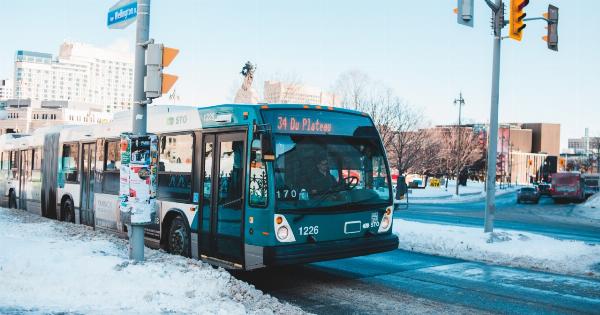In today’s fast-paced world, navigation technology has become an essential tool for motorists. From GPS devices to smartphone applications, drivers now have access to real-time directions and traffic updates at their fingertips.
However, with the rise in popularity of verbal navigation systems, there are growing concerns regarding their potential hazards. This article will delve into the risks associated with hazardous verbal navigation for motorists and offer insights into how to mitigate them.
1. Distraction on the Road
One of the primary concerns with verbal navigation is the risk of driver distraction.
While visual navigation systems also pose a distraction, verbal instructions require drivers to actively engage with the device or software, taking their focus off the road. Studies have shown that cognitive distraction caused by interacting with verbal navigation systems can impair driving performance, leading to delayed reactions and increased accident risks.
2. Misinterpretation of Instructions
Verbal navigation systems heavily rely on speech recognition and text-to-speech technologies. Despite significant advancements in these areas, there is still room for errors and misinterpretations.
The use of unfamiliar or complex street names, noisy environments, or accents can contribute to inaccurate instructions. Drivers may be directed to take wrong turns, make sudden lane changes, or drive in the wrong direction, posing a threat to both themselves and other road users.
3. Dependency on Technology
While verbal navigation systems offer convenience and guidance, they also breed a dangerous dependency on technology.
With continuous reliance on these systems, drivers may become complacent and fail to develop strong map-reading and navigational skills. In case of system failure or loss of GPS signal, motorists may find themselves unable to navigate effectively, leading to confusion and panic while on the road.
4. Cognitive Overload
Verbal navigation systems provide real-time instructions, along with additional information such as upcoming turns, traffic conditions, and points of interest.
However, attempting to process all this information simultaneously can lead to cognitive overload. Drivers may find themselves overwhelmed and unable to make quick decisions, increasing the likelihood of accidents. The abundance of information can also divert their attention from essential road signs and hazards.
5. Incompatibility with Local Road Conditions
Verbal navigation systems often rely on pre-existing databases or connected services to provide directions. However, these databases may not be regularly updated, leading to mismatched instructions and outdated road conditions.
New construction sites, road closures, or traffic detours may not be accounted for, resulting in drivers being directed into hazardous situations. It’s essential for motorists to supplement verbal instructions with local knowledge and common sense.
6. Overreliance on Shortest Route
Verbal navigation systems are typically programmed to prioritize the shortest route. While this may seem efficient, it may not always be the safest option. Certain roads or intersections may have higher accident rates or challenging driving conditions.
Relying solely on the shortest route may lead motorists into areas with heavy traffic, inadequate lighting, or limited accessibility, putting them at increased risk of accidents or getting lost.
7. Lack of Real-Time Traffic Updates
While several verbal navigation systems provide real-time traffic updates, not all of them have this feature.
Without accurate information about congested areas, accidents, or road closures, drivers may find themselves stuck in traffic or unknowingly driving into hazardous situations. It’s crucial to ensure that the chosen verbal navigation system offers reliable and up-to-date traffic information to minimize the risks associated with unexpected road conditions.
8. Language and Cultural Barriers
In today’s multicultural world, language and cultural barriers can pose significant challenges for verbal navigation systems.
Accents or dialects unfamiliar to the speech recognition technology may lead to incorrect interpretations or mispronunciations. Moreover, certain street names or landmarks might be challenging to pronounce or understand, leading to confusion or incorrect instructions.
Verbal navigation systems should aim to bridge these gaps to ensure safer and more accurate guidance for all users.
9. Lack of Customization
Verbal navigation systems often lack personalization or customization options. Each driver has unique preferences or driving styles, and a one-size-fits-all approach may not be suitable for everyone.
Providing options to adjust volume levels, speech speed, or preferred landmarks can significantly enhance the user experience and reduce distractions or frustrations while using verbal navigation.
10. Inadequate User Training
Lastly, many motorists don’t receive proper user training on how to effectively use verbal navigation systems. Understanding the system’s functionalities, voice commands, and potential limitations is crucial for safe navigation.
Manufacturers and software developers should invest in providing comprehensive user manuals and conducting training sessions to empower users with the necessary knowledge for an optimal and safe navigation experience.





























